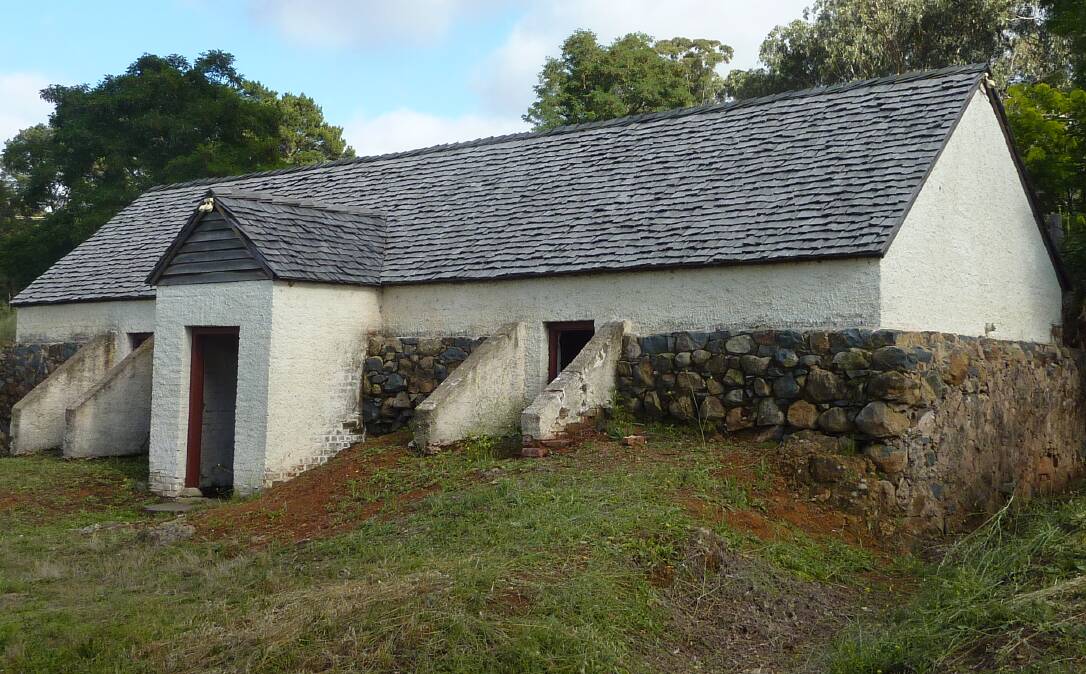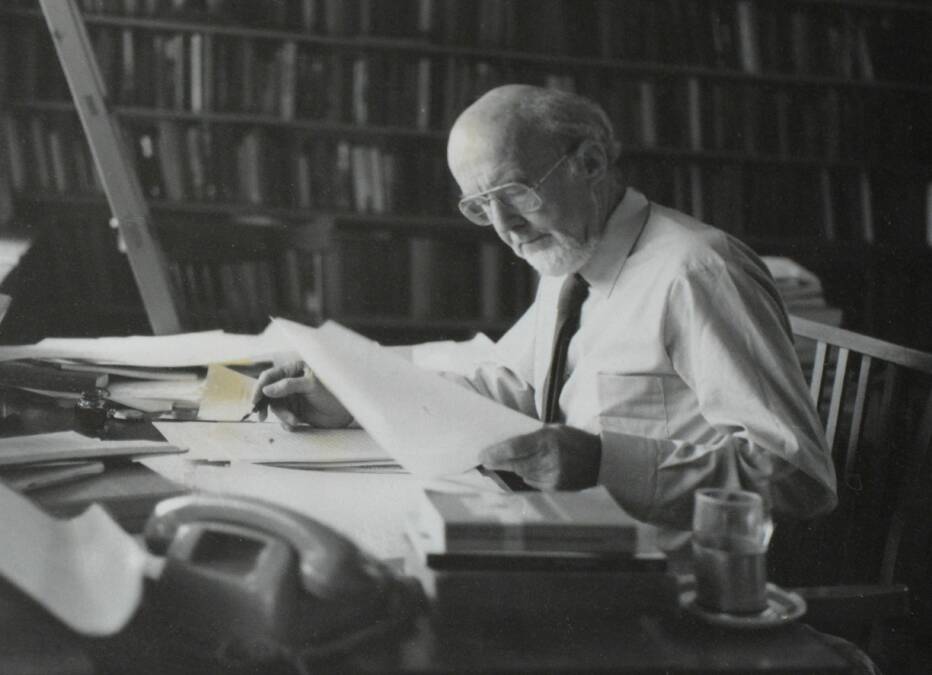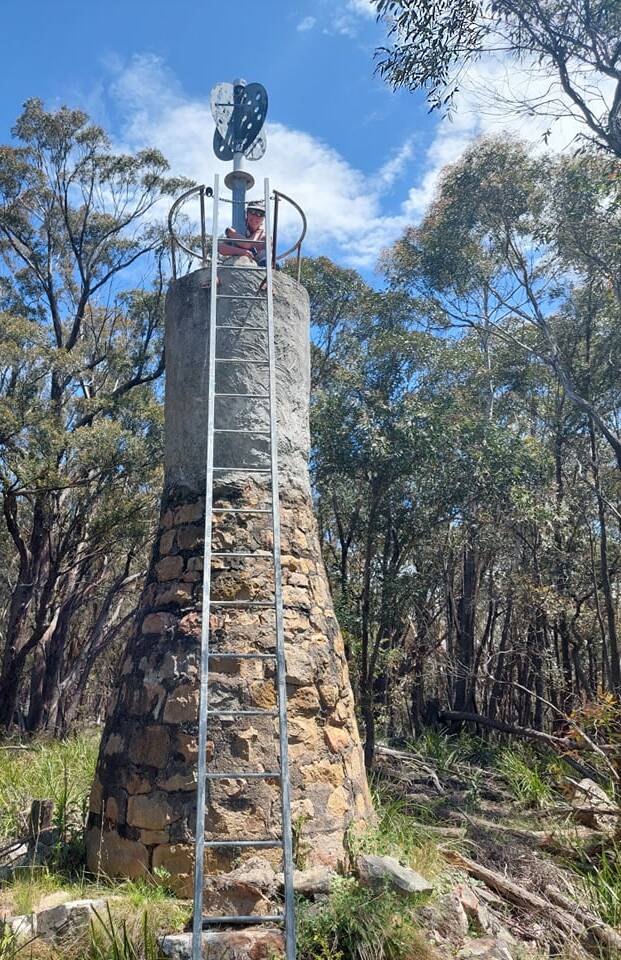As part of this year's Canberra & Region Heritage Festival, three much-loved historic buildings which are usually off-limits to the public are throwing open their doors for rare open days and tours. Don't miss out.
Duntroon Dairy
Kelliher Drive (off Russell Drive), Russell

Built from local stone in 1832 and recognised as the oldest free-standing building in the ACT, the dairy was critical in helping early Canberra to become self-sufficient in basic staples. Several generations of the same family lived and worked here, butter and milk were produced for the Duntroon Estate and further afield.
Don't miss: The well at Duntroon Dairy which is located inside the building - it was dug into a natural spring which not only provided access to water but also created a cool air sink, meaning the building stayed cool and moist even on hot days, perfect for storing dairy products. Ingenious.

Did You Know: In 1977, an archaeological excavation at the dairy uncovered 764 artefacts. Some 400 of these were found in the well, which, after its original use, appears to have been used as a convenient tip. The finds included a dismantled four-poster bed and door lock, manufactured during the reign of William IV (1830-37) which makes it the oldest European artefact held by the Canberra Museum and Gallery.
Mystery Graves: Somewhere just to the north of the dairy building are thought to be six graves. According to Anne Clauoe-Long in her authoritative work Rural Graves in the ACT, A historical Context and Interpretation (2006), "one of the burials is believed to be Brian Logue", the first known dairyman at the dairy in the 1830s. "However, the interpretation of the historical record may be confused here because the seventh child of Brian and Margaret Logue, also named Brian, is noted as being buried near the dairy while an adult Brian Logue is registered as a burial in the Queanbeyan Riverside Cemetery in 1860." I suspect the scenario of an infant burial at the Duntroon Dairy is more likely. The identity of others buried in the unmarked graves is unknown.
When to go: Saturday April 9, 10am-3pm. Tours, talks, entertainment, refreshments, classic cars, stalls and fun for the whole family. Call 6230 0533 or email events@nationaltrustact.org.au. Entry via gold coin donation.
Parkwood Chapel
Parkwood Rd, Wallaroo

The Parkwood Chapel was built in 1880 by Thomas Southwell, an early pioneer and founder of Methodism in the district. Constructed of stone and refurbished by volunteers in 2010, it is a fine example of 19th-century devotion of a family to its religious heritage. The chapel is managed by the Southwell family under an arrangement with the owner of the surrounding land.
A man of faith: The stone building is actually the second chapel built on the site. After hosting a growing congregation to bible readings and prayer meetings in his home at Parkwood, in 1863 Thomas gave a 99-year lease to the Wesleyan Methodist Church as a site for a chapel - a simple lined wooden slab building with boarded floor and bark roof. By 1880 this building was in poor condition and Thomas decided to fund a substantial new stone structure.

Tragedy: Having recently suffered a stroke, Thomas attended the chapel's opening ceremony in December 1880 in a wheelchair. He died soon after on May 31, 1881 and is buried at the Weetangera Methodist Cemetery, near Hawker.
Buried treasure: It is believed that Thomas' wife, Mary placed a gold sovereign (or other valuable coin) under one of the foundation stones for good luck. Apparently it's still there!
Sign of the times: Local preachers held services at Parkwood Chapel for several years after Thomas' death and in the 1900s the building served many varied purposes, including as a shearer's quarters.
When to go: April 30 and May 1 from 12-4pm. Inquiries: 0414 844 392. Free entry.
Manning Clark House
11 Tasmania Circuit, Forrest

An opportunity to snoop around and indulge in afternoon tea at this significant heritage-listed inner south home designed by Robin Boyd in 1952 for eminent historian Professor Manning Clark (1915-1991) and his linguist and historian wife, Dymphna, and their family.
Poet's prophecy: In 1953, just as construction of the home was nearing completion, renowned Australian poet Alec Hope clambered up the attic stairs and while peering out the windows towards Mt Ainslie prophesised, "I see books being written here." How right he was, for it was in this very eyrie that Manning Clark penned almost every single word of his epic six-volume A History of Australia (1962-1987), along with many of his memoirs, speeches, and essays.

Folklore: It's a long-standing Canberra myth that Manning Clark accessed his attic study via a rope ladder and then pulled it up to ensure no one bothered him while he was writing. Although the steepness of the stairs may suggest otherwise, I'm reliably informed that this was never the case.

Tim's tip: Make sure you have a good look around the home, and not just the study. Featuring exposed beams and sloping floor-to-ceiling glass windows, Boyd's design was quite radical for 1950s Canberra. The artistic flair of Boyd's wife is also on display in the house, with several of Yvonne Boyd's delicately hand-painted tiles in both the bathroom and kitchen.
When to go: April 9, 24 and 30 from 12-1pm and 2-3pm, $10pp, bookings essential via manningclarkhse@gmail.com or www.trybooking.com/BWUPK.
- For a full list of 100-plus events at the Canberra & Region Heritage Festival, which runs until the end of the month, see www.act.gov.au/heritagefestival.
Will the real Monica please stand up?

Do you remember this column's quest to get to the bottom of why a survey marker hidden in grass in parkland atop Wongoola Close in O'Connor was emblazoned with the name Monica?
Several weeks ago, this column reported that the Monica trig was established by the Survey Branch of the Department of the Interior during the 1960s and although it was against policy to name trigs after living people, the Monica trig was put in place just after the wife of a respected senior chainman, Jack Bourke, had given birth to a daughter, Monica.
Well, it turns out that this was news to Monica herself!
"I believe that would have been my dad, John (aka Jack) Bourke," explains Monica Bourke who has lived in Canberra her whole life and was "surprised" to discover the marker was named after her.
"Dad was a surveyor (chainman) all his working life, surveying the ACT boundaries as the city grew, and he loved the job especially getting out in the bush for the day. In those days, though, there were no computers used, just the plumb bob on some string and all calculations done in a little book by hand."
Monica reveals she "was born at the old Canberra hospital in 1962 so the likelihood of dad putting that name on there is pretty good".
"That he put a living name on it doesn't surprise me - he was a bit of a devil," she muses.
"Dad passed in 2012 and your story was a beautiful reminder of his personality and him."
Oh, don't you just love a story with a happy ending.
Close Conundrum
Canberra has lots of dead-end suburban streets, but why are some referred to as a "place", others a "court" and others a "close"? Oh, and don't start me on the "street", "road, "way" or "avenue" debate.
WHERE IN CANBERRA?

Rating: Easy - Medium
Cryptic Clue: 18ths 80th

Last week: Congratulations to Bill Jones of Weetangera who was first to identify last week's photo as the trig on Mt Twynam, approximately 18kms east of Bungendore, and north of the Kings Highway. I didn't think anyone would recognise the little-known location, but by chance Bill visited the stone structure last week while scouting for an Orienteering ACT event. The clue of "fairies" related to nearby Mt Fairy.
How to enter: Email your guess along with your name and suburb to tym@iinet.net.au. The first correct email sent after 10am, Saturday April 2, 2022, wins a double pass to Dendy, the Home of Quality Cinema.
SPOTTED

With the wet and mild start to the year resulting in bumper wild crops of mushrooms, my inbox is bulging with photos of monster mushies.
Amongst the most impressive is this Macrolepiota dolichaula (above), photographed by David Byers while walking his dog Georgie on the ridge to the west of Curtin. Meanwhile Jasmine Amy recently plucked this giant Agaricus campestris (below) from the foreshore of Lake Eucumbene. Heck, you could bludgeon someone with that. Which is bigger? I'll let you decide.

CONTACT TIM: Email: tym@iinet.net.au or Twitter: @TimYowie or write c/- The Canberra Times, PO Box 186, Fyshwick, ACT, 2609







